Everyone needs a comfortable and supportive mattress, but this can vary among different groups of people. Petite sleepers are considered those weighing less than 130 pounds, and their best mattress likely won’t be the same as average and heavier individuals. Lightweight people need a mattress with upper layers that are easy to activate. These beds should be supportive but also on the softer side to prevent pressure from building up on sensitive areas.
In this article, we’ll discuss some of the best mattresses for petite sleepers and explain why we picked them. We’ll also cover some important buying considerations and frequently asked questions.
10 Best Mattresses for Petite Sleepers
- Helix Midnight – Best Mattress for Petite Side Sleepers
- Nectar – Best All-Foam Mattress
- DreamCloud Premier – Best Affordable Luxury Mattress for Petite Sleepers
- Winkbeds Original – Best Mattress for Petite Sleepers with Back Pain
- Brooklyn Bedding Signature Hybrid – Best Hybrid Mattress for Petite Sleepers
- Saatva Classic – Best Mattress for Petite Stomach Sleepers
- Nolah Signature – Best Mattress for Pressure Relief and Petite Sleepers
- Cocoon Chill – Best Cooling Mattress for Petite Sleepers
- Bear Original – Best Memory Foam Mattress for Petite Sleepers
Compare The Best Mattresses for Petite Sleepers
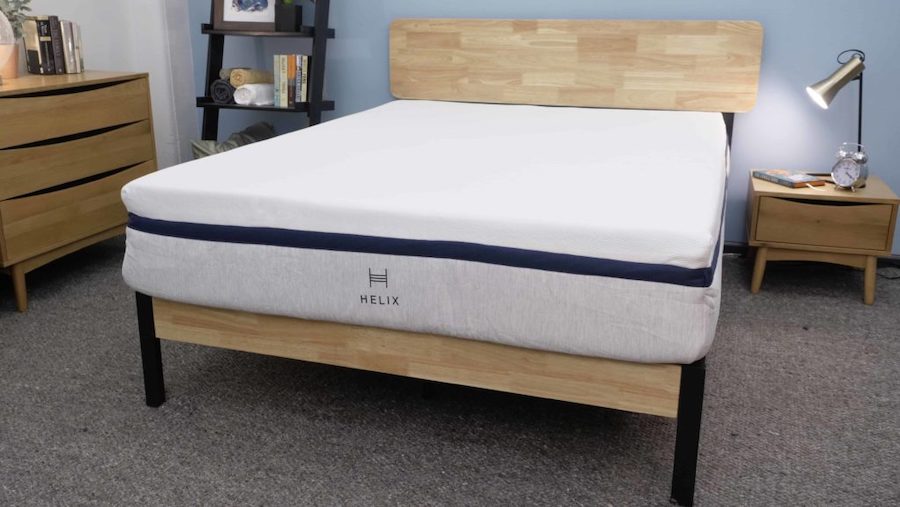
|
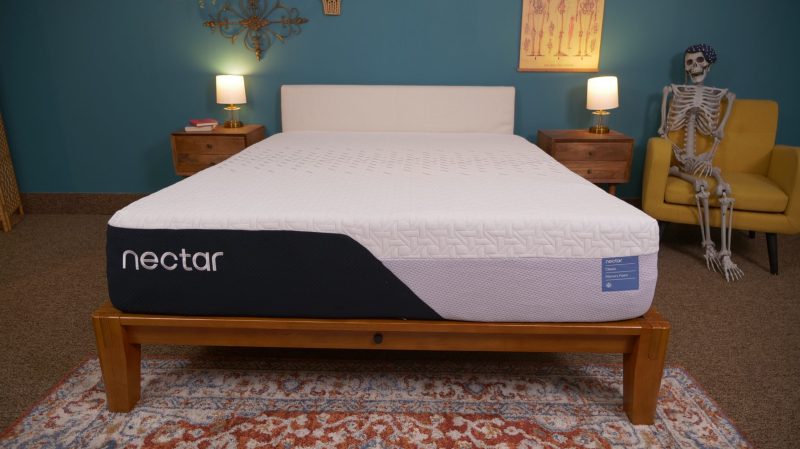
|
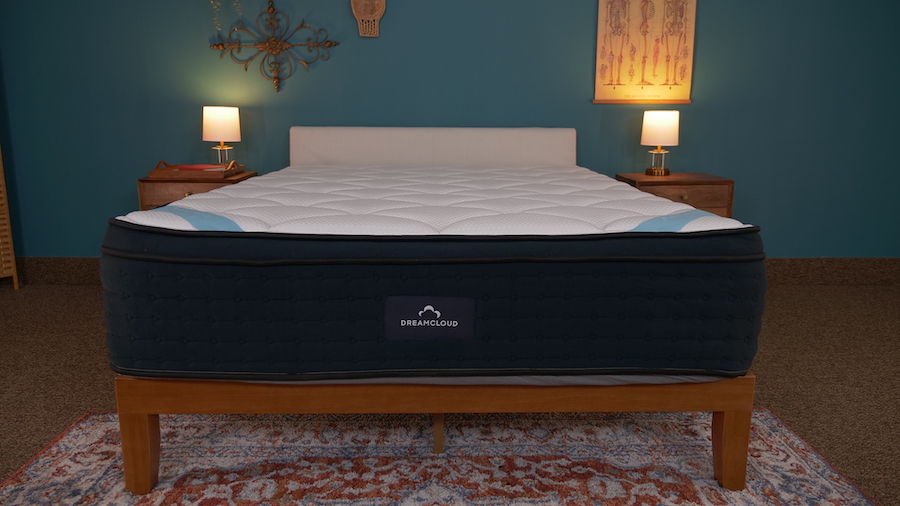
|
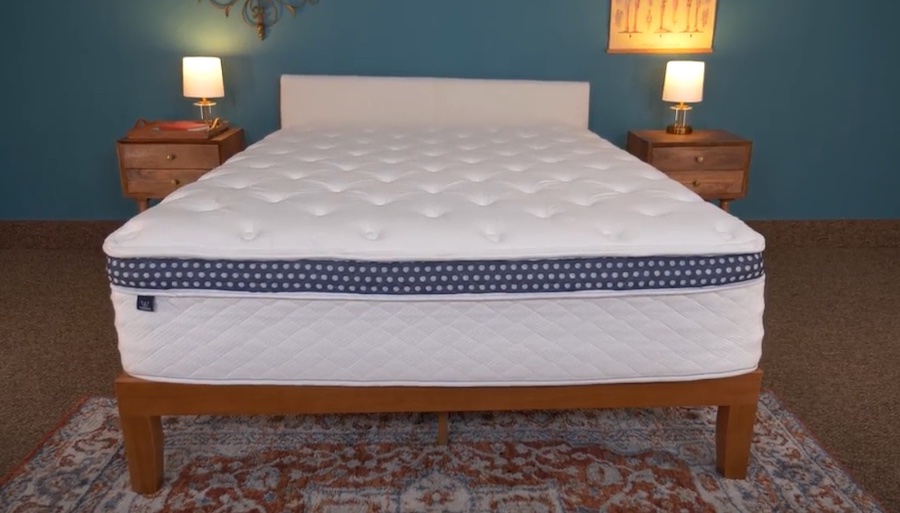
|
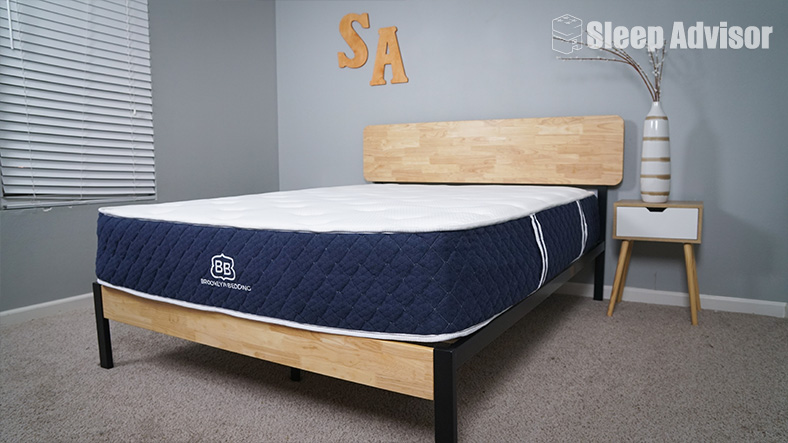
|
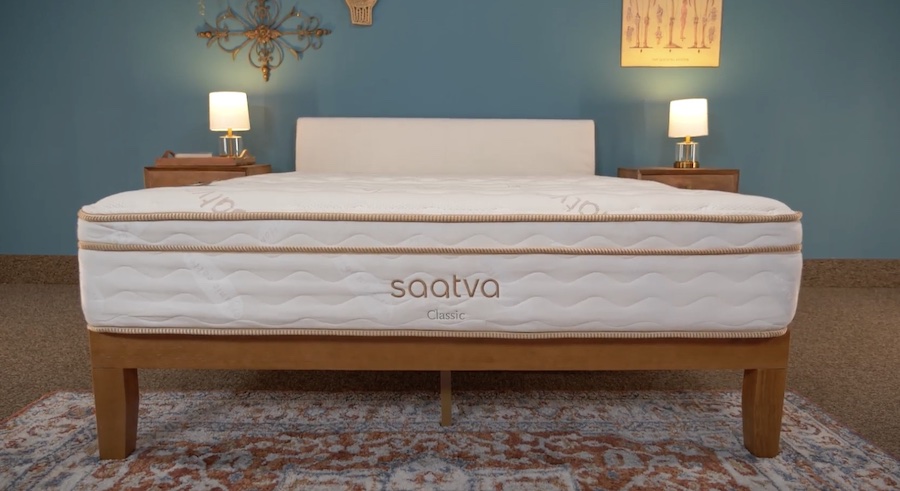
|
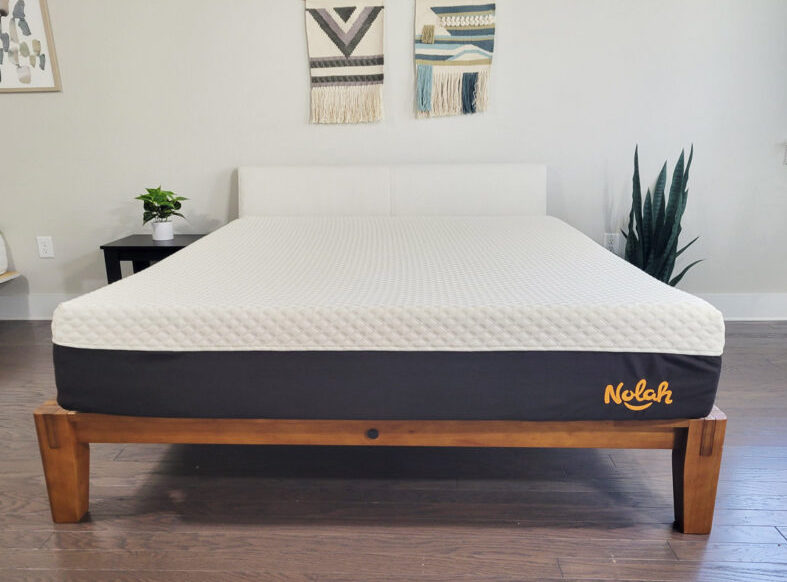
|
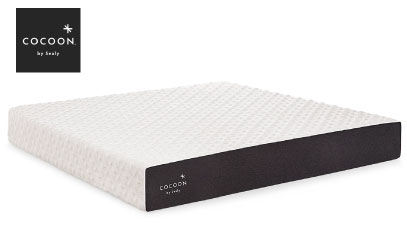
|
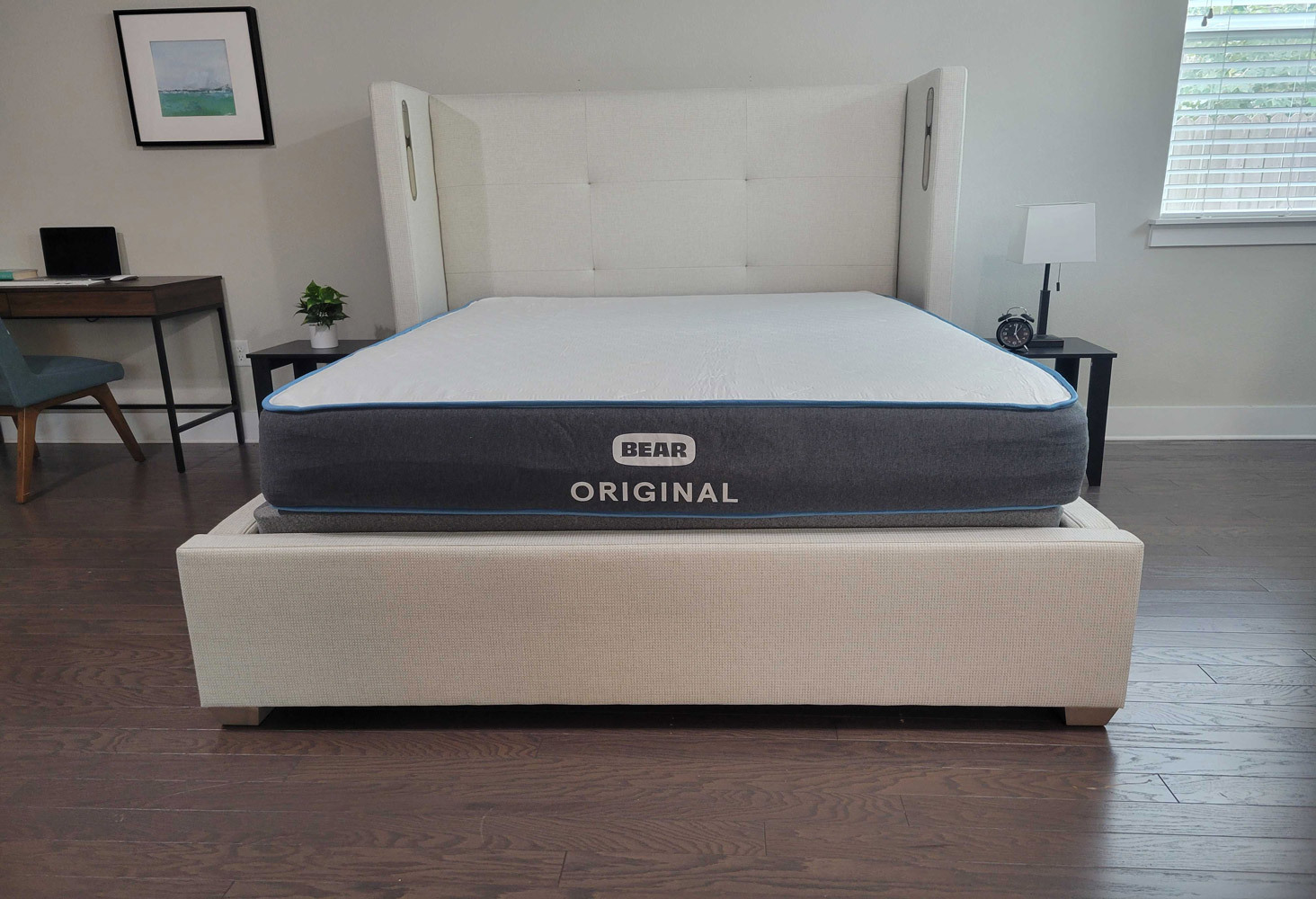
|
|
| Helix Midnight Mattress | Nectar Mattress | DreamCloud Premier Mattress | WinkBed Mattress | Brooklyn Bedding Signature Hybrid | Saatva Classic | Nolah Signature 12″ Mattress | Cocoon Chill Mattress | Bear Original Mattress | |
| Rating | |||||||||
| Firmness | Medium-firm: 6/10 | Firm: 7.5/10 | Medium: 5.5/10 | Multiple firmness options | Multiple firmness options | Multiple firmness options | Medium-firm: 6/10 | Medium-firm: 6/10 | Firm: 7/10 |
| Material | Hybrid | Foam | Hybrid | Hybrid | Hybrid | Innerspring | Foam | Foam | Foam |
| Cooling | — | — | — | — | |||||
| Warranty | Limited Lifetime Warranty | Lifetime warranty | Lifetime warranty | Lifetime warranty | Limited Lifetime Warranty | Lifetime warranty | Limited Lifetime Warranty | 10-year warranty | Limited Lifetime Warranty |
| Shipping | Free shipping | Free shipping | Free shipping | Free shipping | Free shipping | Free white glove delivery | Free shipping | Free shipping | Free shipping |
| Trial Period | 100 nights | 365 nights | 365 nights | 120 nights | 120 nights | 365 nights | 120 nights | 100 nights | 120 nights |
| Best For | Side Sleepers, Back Sleepers, Couples | Side Sleepers, Back Sleepers, Stomach Sleepers, Back Pain, Couples | Back Sleepers, Hot Sleepers | Side Sleepers, Back Sleepers, Stomach Sleepers, Hot Sleepers, Back Pain, Hip Pain, Seniors | Side Sleepers, Back Sleepers, Hip Pain, Couples | Back Sleepers, Stomach Sleepers, Hot Sleepers, Back Pain, Seniors | Side Sleepers, Back Pain | Side Sleepers, Back Sleepers, Hot Sleepers | Back Sleepers, Stomach Sleepers, Hot Sleepers, Hip Pain |
Sleep Advisor’s Testing Methodology
At Sleep Advisor, our mattress reviews are based on in-person tests that give us a genuine understanding of how the mattress feels and performs. We then take all the information we’ve gathered to rate the bed in specific categories. These results allow us to help our readers find the right mattress for their needs.
For this list, we focused on mattress qualities helpful for lightweight sleepers specifically, such as pressure relief, a softer overall feel, and a good trial period to ensure the right match.
Petite people will experience a mattress differently than heavier sleepers, so these unique considerations were important in our mattress picks.
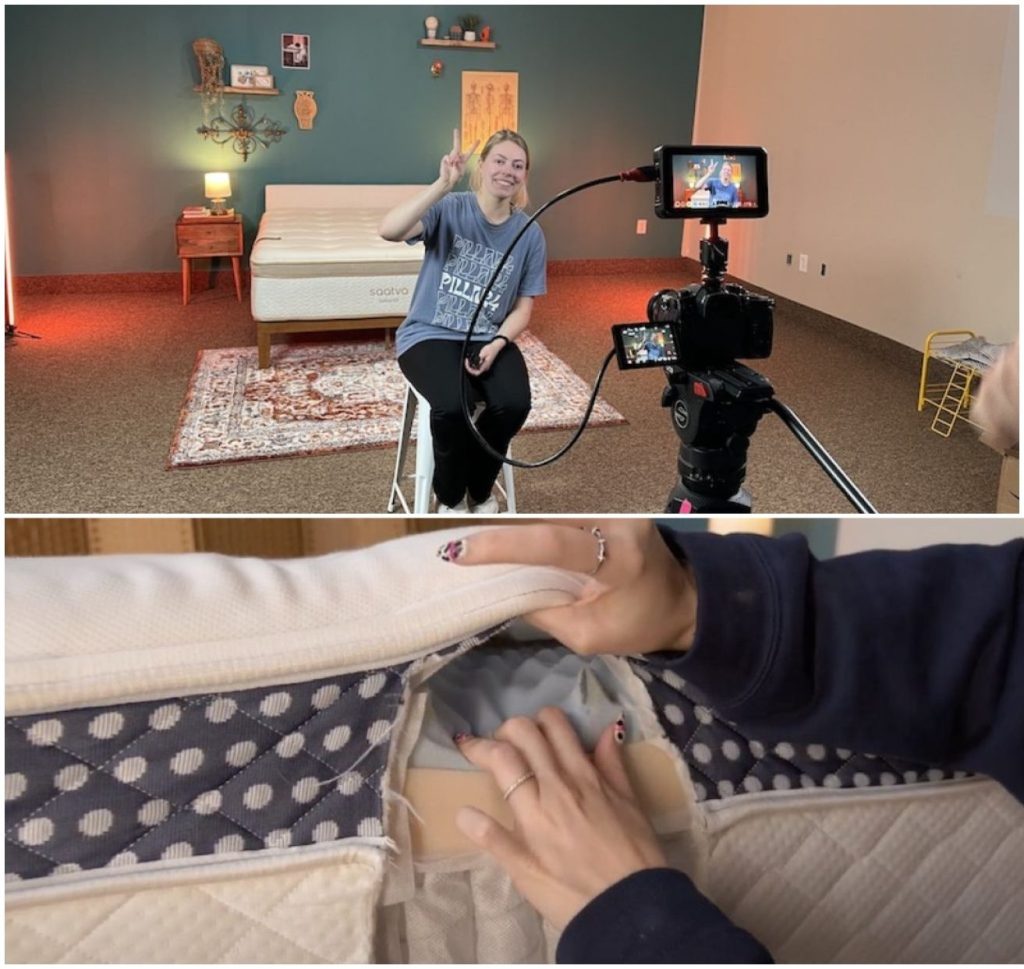
What We Look for in a Mattress for Petite Sleepers
Great Pressure Relief
If you’re a lightweight person, odds are you’ll need lots of pressure relief from your bed so that it doesn’t hurt your pressure points like the shoulders or knees when you lie down. To make this list, a bed should include excellent pressure-relieving materials. You’ll find many beds on our list with memory foam, a top material for pressure relief, but we also included some with latex since some petite people may prefer this to memory foam.
Softer Feel
Petite sleepers don’t sink into a mattress as much as heavier people because they don’t carry as much weight. To compensate for this, lightweight people often need a softer mattress so that it’s not too firm for them. With this in mind, we included beds with a soft to medium-firm feel to accommodate different sleep positions a petite person may use. A soft to medium-firm bed will have a firmness rating between a 4 and 6.5 out of 10 (10 is the firmest possible feel). Some of our beds are even available in different firmness levels.
Lengthy Trial Period
If you’re a lightweight person, it’s especially helpful to get a mattress with a good trial period so you can see whether it works for you by testing it in the comfort of your own home. This way, if it doesn’t work out, you can return it and find something better suited for you. The mattresses on our list all come with lengthy sleep trials of at least 100 nights, though some go all the way up to a full year.
The Best Mattresses for Petite Sleepers
Helix Midnight – Best Mattress for Petite Side Sleepers

Helix Midnight Mattress

Product Details
Our Recommendation
Financing Options
Financing options are available for this mattress.
The Helix Midnight has a medium feel that should work well for petite side sleepers. Pressure build-up is a common issue most lightweight sleepers struggle with, so a bed that’s not too firm orshould help. This Helix has multiple layers that cushion the pressure points, especially the hips and shoulders.
The Helix Midnight is ideal for side sleepers and those who toss and turn. This makes it a good fit for partners with different sleeping habits. In addition, the middle layer supports the body, so even average-size individuals should find the bed comfortable.
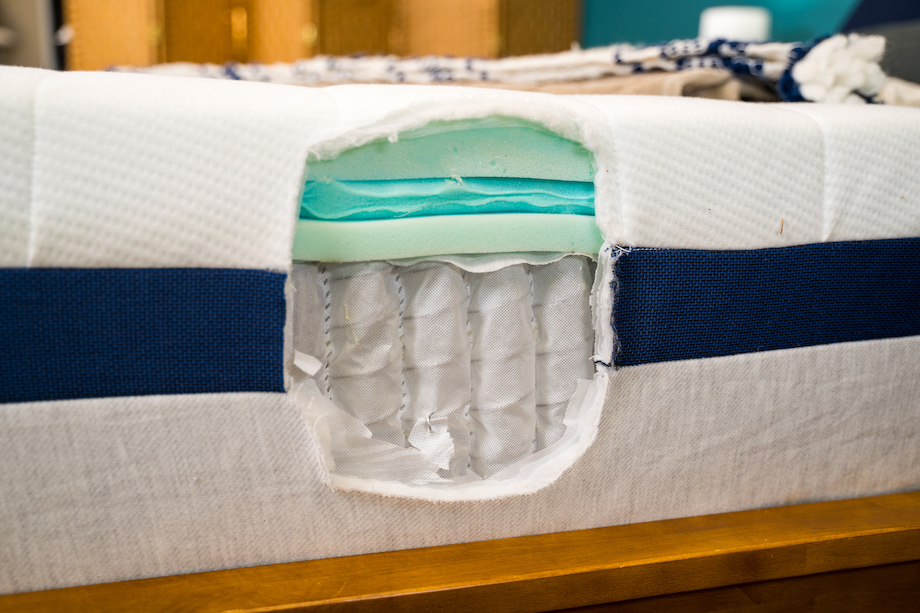
Nectar – Best Cheap Mattress

Nectar Mattress

Product Details
Our Recommendation
Financing Options
Financing options are available for this mattress.
Petite sleepers who want an all-foam mattress on a budget should like the flagship Nectar model–a queen size will only run you about $1,000, and that’s before frequent sales. It’s rated 6.5 out of 10 on our firmness scale for a medium-firm feel. Our editor, Jill, is a petite sleeper and has the Nectar at home. She says it’s one of those rare beds that she can use in every sleep position and still feel comfortable.
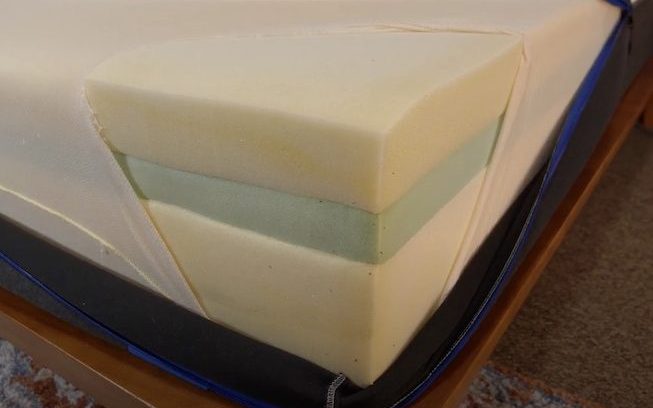
DreamCloud Premier – Best Luxury Mattress for Petite Sleepers

DreamCloud Premier Mattress

Product Details
Our Recommendation
Financing Options
Financing options are available for this mattress.
DreamCloud brings luxury to another level by incorporating premium materials in its 7-layer hybrid construction – all for an affordable price.
The top two layers are part of the cover, which means the bed has five layers of foam and coils to deliver support, comfort, and pressure relief.
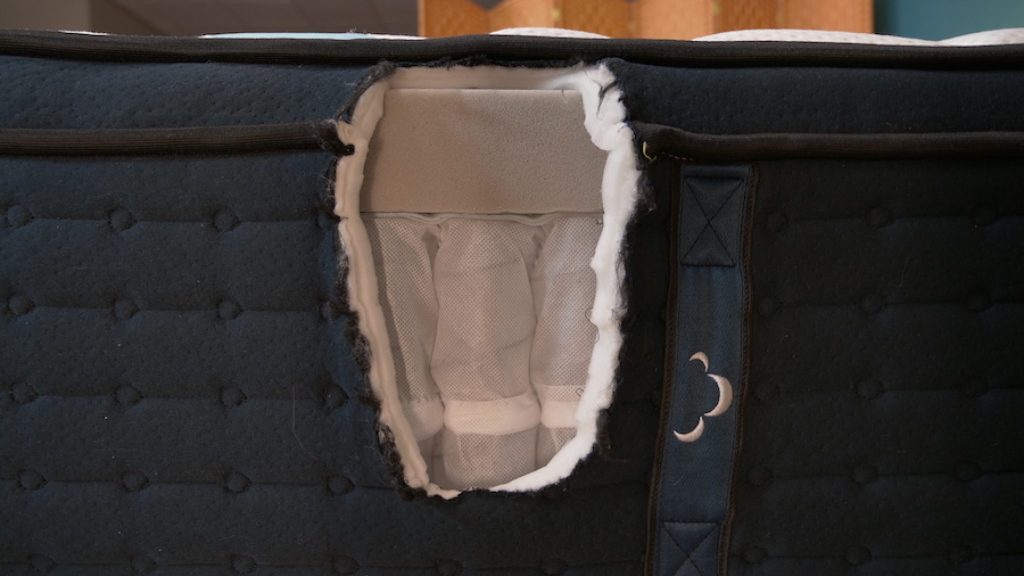
Winkbeds Original – Best Mattress for Petite Sleepers with Back Pain

WinkBed Mattress

Product Details
Our Recommendation
Financing Options
Financing options are available for this mattress.
The WinkBeds Original is a hybrid mattress with multiple proprietary technologies that make it stand out among others. Shoppers can choose among several firmness levels: Soft, Luxury Firm, Firm, and Plus. Petite sleepers should do best with the softer model as it provides the best body-hugging and pressure relief.
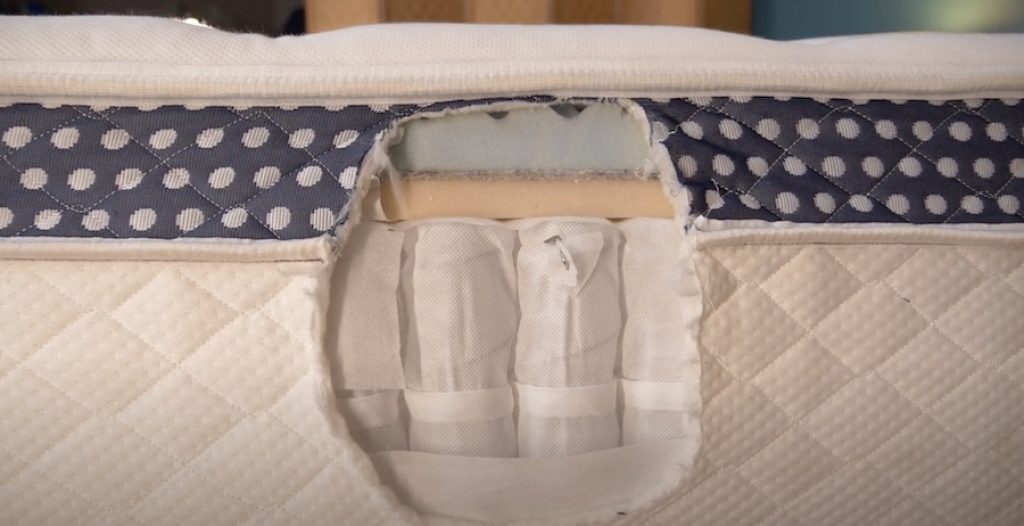
Brooklyn Bedding Signature Hybrid – Best Hybrid Mattress for Petite Sleepers

Brooklyn Bedding Signature Hybrid

Product Details
Our Recommendation
Financing Options
Financing options are available for this mattress.
The Brooklyn Bedding Signature Hybrid is available in three firmness levels, but the soft one should be the best fit for petite sleepers. The hybrid construction offers versatile performance, so the bed is equally good for couples.
The Brooklyn Bedding Signature Hybrid features the brand’s proprietary TitanFlex™ comfort foam, individually encased coils, and VariFlex™ transition foam.
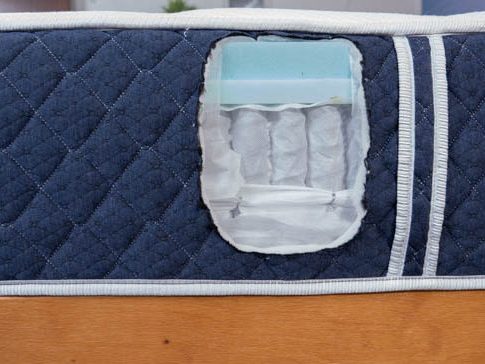
Saatva Classic – Best Medium-Firm Mattress for Petite Sleepers

Saatva Classic

Product Details
Our Recommendation
Financing Options
Financing options are available for this mattress.
A medium-firm mattress is a middle-of-the-road choice that’s meant to please a wide variety of sleepers—but you can’t choose just any medium-firm bed. The Saatva Classic is a hybrid bed with two innerspring units for added bounce, durability, and support. It comes in three firmnesses, but the Luxury Firm is best for folks who want the true medium-firm experience.
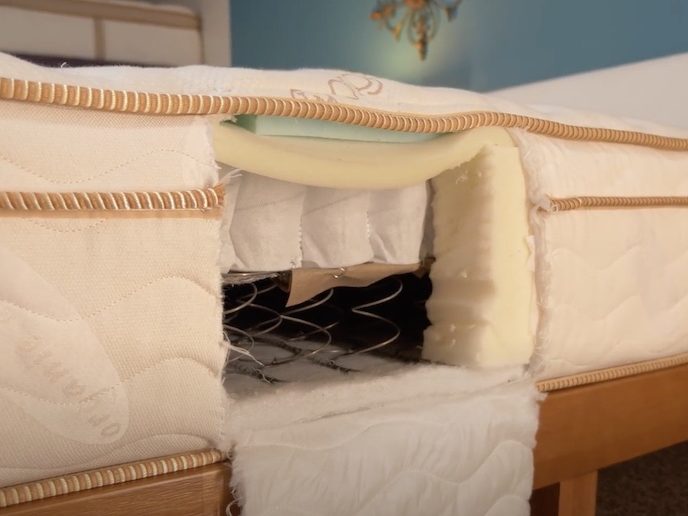
Nolah Signature – Best Mattress for Pressure Relief and Petite Sleepers

Nolah Signature 12″ Mattress

Product Details
Our Recommendation
Financing Options
Financing options are available for this mattress.
Petite sleepers struggling with pressure build-up need a softer bed that cushions and hugs the body. This helps to relieve pressure in sensitive areas like the shoulders, hips, and knees that usually hurt the most upon waking.
The Nolah Signature is an all-foam bed that features the brand’s proprietary AirFoam™. This model has 75 percent more AirFoam™ than the Nolah Original, which should deliver up to 40 percent more pressure relief.
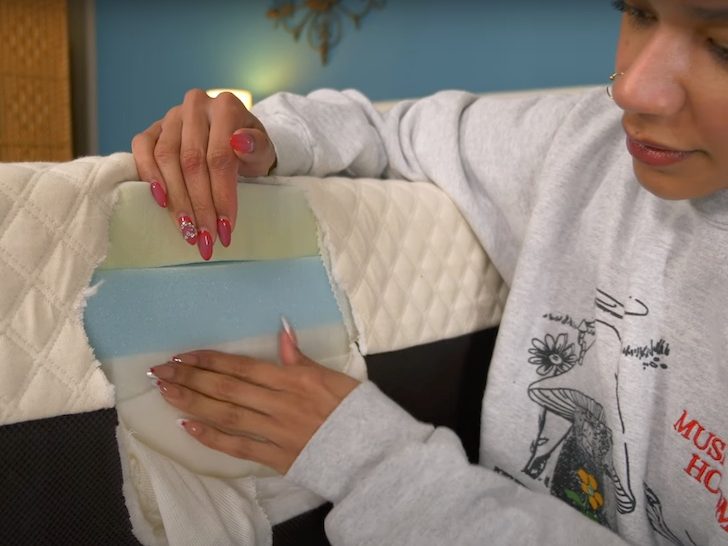
In addition, the foam helps keep the bed cool, helping hot sleepers even during the hottest nights.
Cocoon Chill – Best Cooling Mattress for Petite Sleepers

Cocoon Chill Mattress

Product Details
Our Recommendation
Financing Options
Financing options are available for this mattress.
The Cocoon Chill by Sealy is a cooling mattress with a proprietary phase-change material infused in the stretch-knit cover. The cover absorbs and dissipates heat, allowing the surface of the bed to stay cool through the night.
In addition, this mattress features a medium firmness, so petite sleepers should find gentle cradling and sufficient pressure relief. The memory foam adapts to your body, responding to movement and the shape of your curves. As a result, you get a supportive feel that doesn’t create any pressure points, regardless of your preferred sleeping position. The Cocoon Chill is an all-foam mattress, so it’s a good fit for those looking for a classic memory foam bed.
Bear Original – Best Memory Foam Mattress for Petite Sleepers

Bear Original Mattress

Product Details
Our Recommendation
Financing Options
Financing options are available for this mattress.
Memory foam is one of the most sought-after bedding materials because it’s made to cradle the sleeper’s body for exceptional comfort.
Usually, foam beds can be too soft, even for petite sleepers, but the Bear Original offers a firmer profile to help keep you supported.
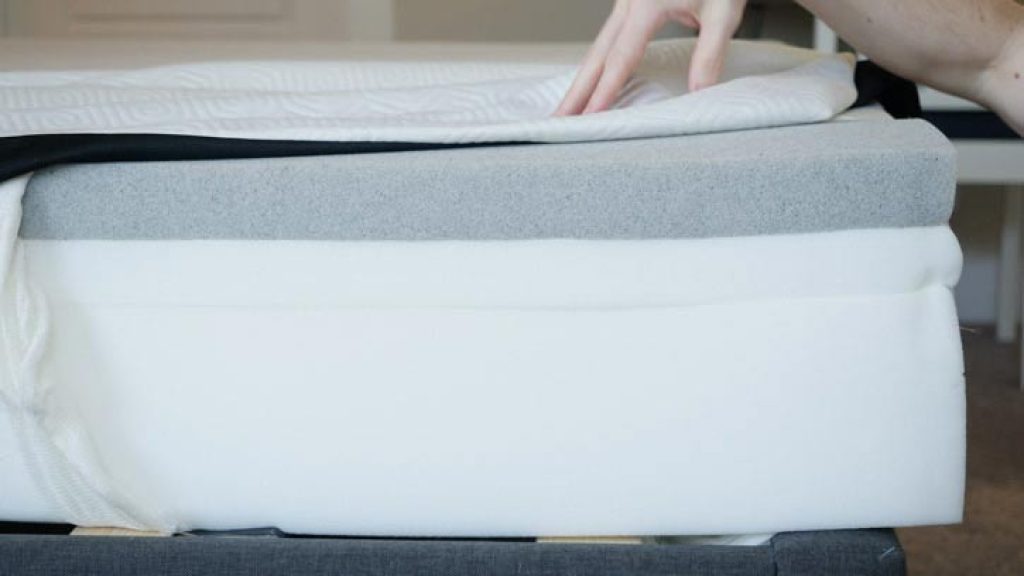
The Bear Original should work best for back and stomach sleepers who need this lift, though some side sleepers might enjoy it as well. Its all-foam construction is also a good fit for couples since it absorbs motion, meaning your movements shouldn’t disturb your sleep partner.
What Is a Mattress for Petite Sleepers?
A good mattress for petite sleepers is a soft to medium bed that will deliver the right balance of pressure relief and support. With this in mind, certain mattress types may be better for petite sleepers than others.
What to Look for in a Mattress for Petite Sleepers
Lightweight sleepers need a specific mattress to deliver the perfect balance of comfort, pressure relief, and support in different sleeping positions. If you weigh less than 130 pounds and you’re looking to buy a new mattress, the following considerations should go into your decision-making process.
Type of Mattress
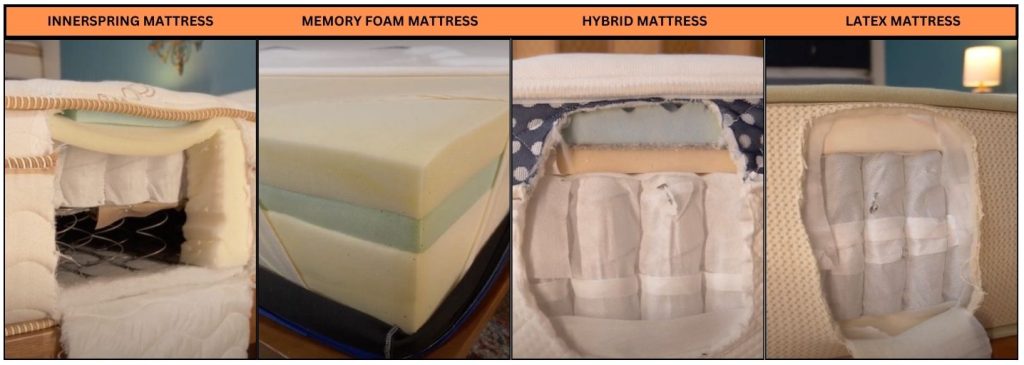
Innerspring Mattresses
Innerspring mattresses have interconnected spring coils, offering lots of bounce. Although these aren’t the best when it comes to motion isolation, their bounciness can make them easier to move on. The upper layer is usually a pillow top, wool, or a thin layer of foam to provide some transitioning to the coil unit. Innerspring beds are some of the firmest around, though, so there’s minimal contouring. For this reason, these likely won’t be the best option for petite sleepers.
Hybrid Mattresses
Hybrid mattresses feature a combination of multiple foam layers and a coil unit. These beds may use memory foam, poly foam, latex, or a mix of all three. The construction usually has a steel coil unit as a support layer, while memory foam or latex make up the upper comfort layers. The result is a supportive bed with plenty of cushioning, responsiveness, and bounce.
Manufacturers mix different materials to achieve a certain feel and performance. Hybrids can also be very breathable and cool, especially if they incorporate cooling features and materials.
Memory Foam Mattresses
Memory foam mattresses have foam layers of different thicknesses and densities. Most brands use memory foam in the top comfort layers, with denser poly foam below for support. Memory foam beds are often considered some of the top-performing models for pressure relief, making them a great option for petite sleepers.
Memory foam mattresses are also excellent at absorbing motion, which is good news for couples. However, one drawback is that this foam tends to overheat, so these beds may not be the best for hot sleepers unless they feature some kind of cooling technologies and materials.
Latex Mattresses
A latex bed is an excellent option if you’re prone to allergies because the material is hypoallergenic and resistant to dust mites, mold, and mildew. Latex is highly responsive and offers great pressure relief, which is important for petite sleepers, especially those who sleep on their side.
Latex beds made with natural ingredients are also ideal for eco-conscious shoppers. One drawback is that latex beds are typically more expensive, but their durability means they should last a long time.
Other Considerations When Shopping for a Mattress for Petite Sleepers
Sleeping Position
Your sleeping position will affect the kind of bed you find comfortable. Most side sleepers, especially petite ones, prefer softer beds that cushion and contour the body to prevent pressure from building up on the shoulders, hips, and legs. However, back and stomach sleepers will like more medium-firm beds that offer more support in these areas.
Firmness
No matter your body type, a mattress that’s too soft would cause the hips to sink more into the construction, forcing the spine out of alignment. Conversely, a mattress that’s too firm would create pressure points and cause discomfort due to the lack of cushioning.
We rate mattress firmness on a scale of 1-10, with 10 being the firmest feel possible. Usually, petite sleepers should look for a bed between a 4 and 6.5 on this scale. Anything softer than that won’t be supportive enough, and anything firmer might be too hard. Some petite stomach sleepers may enjoy a bed slightly firmer than this, but generally, this is a good range to aim for.
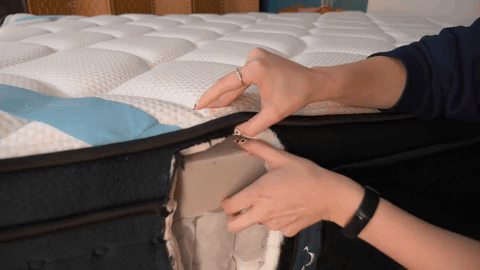
Cooling
Cooling is an important feature for people who sleep hot at night. Normally, hybrid, innerspring, and latex beds sleep the coolest.
However, manufacturers have found a way to help keep memory foam from overheating by using cooling mechanisms like gel infusions or an open-cell structure. Mattress companies may also use breathable fabrics in the cover to help keep the bed cool, such as phase-change material, cotton, and wool.
Motion Isolation
Motion isolation is usually important to couples with different sleeping habits. If you’re petite and your partner is on the heavier side, you may feel them moving, tossing, and turning throughout the night. A bed that absorbs motion and prevents it from traveling from one side to the other could help provide a better night’s sleep.
If motion isolation is important to you, look for beds with memory foam or hybrids that utilize both memory foam and individually wrapped coils to limit motion transfer.
Sex
Petite sleepers who are sexually active are likely to appreciate the bounce and responsiveness found in innerspring, hybrid, and latex mattresses. To avoid feeling stuck when repositioning during sex, you’ll want a bed that can quickly bounce back to its original shape after weight has been applied. The fast-acting nature of latex and coils makes these materials ideal for this.
Browse: Best Mattress for Sex
Pressure Relief
A quality mattress should help prevent pressure from building up while still maintaining a proper level of support for the spine.
Petite people can struggle with increased pressure if their beds don’t contour them enough. The reason for this is that light sleepers don’t always have enough weight to activate comfort layers and as a result, they will feel a bed to be more firm than those carrying more weight. Therefore, petite sleepers need a softer bed with targeted pressure relief to compensate for this.
Edge Support
Edge support is another factor typically important to couples. However, single individuals who like to spread out across the bed should also consider edge support.
Most brands use higher-density foam or steel coils along the perimeter to reinforce the edges and prevent them from collapsing. This should allow you to sit or sleep near the edge without feeling like you’d slide off.
Budget
Mattresses of all kinds are available for different prices, so there’s a bed for everyone’s budget. You should first think about how much you’re willing to spend as well as the features and specifications you’re looking for in a bed. Buying from an online retailer helps save some money since the manufacturer ships directly to you.
Sleep Trial & Warranty
If you’re shopping for a mattress, especially online, a good sleep trial and warranty are essential. The sleep trial is the amount of time in which you can test out the mattress at home and receive a refund if you don’t like it. If you’re getting a new mattress, look for something with at least a 90-night sleep trial, but keep in mind that some brands want you to keep the bed for at least 30 nights before initiating a return.
A good warranty deal can indicate a brand stands behind their product. The minimum warranty we see among top brands is 10 years, though some offer lifetime deals. A 10-year warranty might seem like small potatoes next to a lifetime one, but that’s also the average lifespan for a mattress so it’s not always a worse deal.
How Body Weight Impacts the Feel of a Mattress
Body weight can impact how soft or firm a mattress feels, as well as how supportive it may be. If it’s too soft, you may sink too deeply, causing your back to curve too much. Conversely, mattresses that are too firm for your body type could exacerbate discomfort on pressure points.
Petite sleepers usually don’t require much firm support because they don’t compress their bed as much as a heavier person would. This is why most petite sleepers do well with soft to medium mattresses.
Best Mattress for Petite Sleepers FAQs
What is the best firmness for lightweight sleepers?
Lightweight sleepers tend to sleep well on a soft to medium mattress (4-6.5 firmness rating). These firmness levels are most likely to provide them with pressure-relieving cradling and support. If a mattress is too firm for a lightweight sleeper, they may not get enough cushioning for their joints and muscles.
What is considered a lightweight sleeper?
We use the term ‘lightweight sleeper’ to describe someone weighing less than 130 pounds, which can include both adults and children. However, if you are shopping for a young person, we recommend visiting our list of our favorite mattresses for kids, which includes beds specially made for children.
Is memory foam good for lighter people?
Memory foam is great for lighter people because it does an excellent job of hugging the body’s curves and relieving pressure on the most sensitive areas. Soft or medium-firm beds built with memory foam can provide a plush feel most petite sleepers enjoy.
Do lightweight sleepers need a softer bed?
Lightweight sleepers usually need a softer mattress because they don’t weigh enough for a firmer bed to compress and respond to their movement. As a result, these individuals may find a harder mattress uncomfortable.
However, this will also depend on your preferred sleeping position. Lightweight side sleepers could feel comfortable on a mattress with a soft rating, while back and stomach sleepers could be a good match for beds with a medium firmness.
Are thicker mattresses better?
Yes, thicker mattresses can be better in some cases. While lightweight sleepers don’t run the risk of bottoming out on a thin bed the way heavier people could, they can find more softness through thicker beds because of the added layering. When a mattress has a plush cover, a few comfort layers, and a transitional layer on top of the base, this could help it feel more comfortable. Conversely, beds with only a few layers may feel firmer. That being said, if you’re a petite sleeper who is short and has a high foundation, a bed that’s too thick could be harder to get in and out of.
| Mattress | Best For | Price (Queen Size) | Review |
| Helix Midnight | Side Sleepers | $1,199 | Helix Midnight Mattress Review |
| Nectar | Cheap | $1,099 | Nectar Mattress Review |
| DreamCloud Premier | Luxury | $1,832 | DreamCloud Premier Mattress Review |
| Winkbeds Original | Back Pain | $1,799 | Winkbed Mattress Review |
| Saatva Classic | Medium-Firm | $2,095 | Saatva Classic Mattress Review |
| Nolah Signature | Pressure Relief | $1,599 | Nolah Signature Mattress Review |
| Brooklyn Bedding Signature Hybrid | Hybrid | $1,249 | Brooklyn Bedding Signature Hybrid Mattress Review |
| Cocoon Chill | Cooling | $699 | Cocoon Chill Mattress Review |
| Bear Original | Foam | $998 | Bear Original Mattress Review |

Olivera Jancikin
Content Writer
About Author
Olivera is a content writer for Sleep Advisor and is enthusiastic about sleep. She firmly believes in the benefits of daytime naps on top of getting a full 8-hour sleep at night.
Combination Sleeper
Education & Credentials
- Certified Sleep Science Coach
